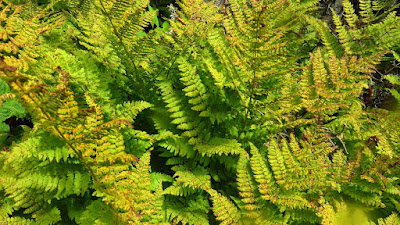 |
| Oil painting with regular (glossy) Gamvar Varnish. Note the glare. It's not too distracting, because this painting has mostly light or midtone values. |
Varnishing an oil painting does two things. First, it protects the painting from grime. Remember that hamburger you fried up for lunch yesterday? Some of the grease became airborne and most likely ended up on the painting. Second, varnishing brings colors back to their original saturation and values. Paint, especially the earth colors, lightens and dulls as it dries. Without varnish, the painting looks as stale as yesterday's leftovers.
Most painters prefer a glossy varnish, which imparts a delicious glisten to the surface. The painting seems fresh, "off-the-easel" wet.
But sometimes a matte varnish is a better choice. This is the case with paintings that have large, dark passages. Some portraits, still lifes and nearly all nocturnes, fall into this category. If you apply a glossy varnish to these, you'll more than likely get a distracting glare under certain kinds of lighting. Gamvar Matte Varnish is what I use in this case.
One applies Gamvar Matte Varnish the same way you do the regular Gamvar. Just brush it on, without thinning. The matte version is a little more viscous than the regular, but brushing it on thinly is still the rule. It can be used when the thickest areas of the painting are dry to the touch; no need to wait six months to varnish, as is the case with most picture varnishes.
Gamvar also comes in satin finish, which has a gloss level somewhere between glossy and matte. For more information on Gamblin varnishes, see https://www.gamblincolors.com/oil-painting/gamvar-picture-varnish/





























